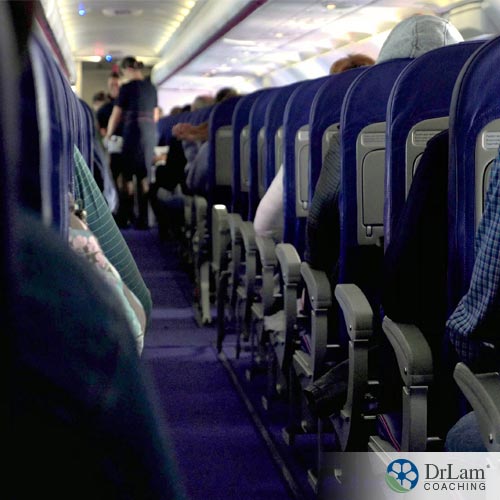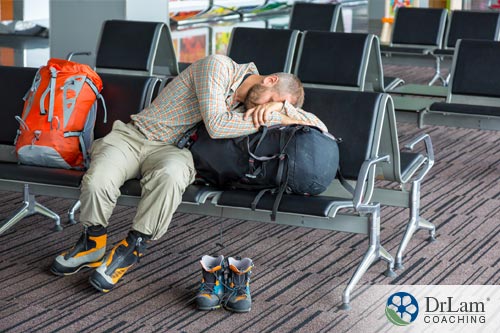 It's wonderful to travel the world and explore exotic locations, but often times that includes long, bothersome airline flights. Unless you’ve been blessed with flying first class, chances are your leg space is limited in economy. For most, this won’t cause any complications other than discomfort or minor cramping, but for others, it could be a life-threatening condition known as economy class syndrome, or ECS. There are certain people who are at a higher risk of contracting this disorder. However, there are also ways to prevent this mile-high ailment.
It's wonderful to travel the world and explore exotic locations, but often times that includes long, bothersome airline flights. Unless you’ve been blessed with flying first class, chances are your leg space is limited in economy. For most, this won’t cause any complications other than discomfort or minor cramping, but for others, it could be a life-threatening condition known as economy class syndrome, or ECS. There are certain people who are at a higher risk of contracting this disorder. However, there are also ways to prevent this mile-high ailment.
DVT or deep vein thrombosis is a condition where blood clots form in the deep veins of the body, specifically those found in the legs. Deep vein thrombosis is usually caused when a lack of proper circulation occurs in the leg, leading to a stagnation of blood in the deep veins. It has been seen to occur most frequently in patients who have long stays in hospitals or nursing homes, and in long-distance air passengers. More so, those traveling in crammed quarters with limited space such as economy class, thus given the name “economy class syndrome.”
Researchers have also found that passengers aboard a plane often become dehydrated due to the dryness of the air in the plane cabin. This often causes the blood to thicken, which combined with the immobility and low cabin pressure could be an equation for the rise in DVT among flight passengers.
Economy class syndrome can lead to a very serious and fatal condition called pulmonary embolism. If a blood clot breaks off from the leg and lodges into a lung, this could be a sudden death situation for a passenger. Pulmonary embolism is a fatal occurrence that sadly claims the lives of over 200,000 American citizens a year. It is important before traveling to be preventative. Know your body, and know what measures to take to avoid economy class syndrome.
The onset of economy class syndrome can be very sudden. The most common presenting symptom is shortness of breath but there are other signs to look for in the calf area such as
In a severe case, the swelling and redness can even extend from the leg to the thigh and even hip areas. It can even take up to two weeks for symptoms to develop.
Studies have shown that economy class syndrome, or DVT, has been linked to a high blood level of homocysteine, a very sulfuric amino acid. High homocysteine levels have also been linked to cardiovascular diseases and the development of atherosclerosis, a narrowing of the arteries due to plaque building up on the artery walls. Making sure your homocysteine levels are in normal ranges could be very beneficial to your health, especially prior to traveling.
A University of Milano study found the following results pertaining to homocysteine levels:
The B vitamins play a huge role in preventative wellness especially when it comes to metabolic pathways. They are extremely helpful in boosting energy levels and fighting fatigue.
 Yes, to avoid all this, you could sit in first class for more leg room, but if you follow the exercises below, and know your body’s chemistry before you depart on your travels, you could greatly reduce your chances of having economy class syndrome. Regardless of where you sit on a long flight, it is important that you get up and walk around every 15 to 30 minutes.
Yes, to avoid all this, you could sit in first class for more leg room, but if you follow the exercises below, and know your body’s chemistry before you depart on your travels, you could greatly reduce your chances of having economy class syndrome. Regardless of where you sit on a long flight, it is important that you get up and walk around every 15 to 30 minutes.
While you are seated, the following exercises will help with circulation:
There are also a set of exercises to promote circulation that can be completed while standing in the aisle by your seat, or near the restrooms:
Practicing these stretches and exercises when you are confined to a seat for more than 3 hours at a time is very important for circulation and overall health, especially for anyone who is more prone to economy class syndrome.
Not everyone is at risk for ECS. Those predisposed to clotting include the following people:
 Adrenal fatigue is the body’s response from an overexposure to stress. With the adrenal glands playing such an important part in health, when they are injured, the entire body suffers tremendously. People who suffer from AFS may be more prone to economy class syndrome for many reasons, one being that they may be compromised in fluid balance. Many with AFS tend to be prone to dehydration and fluid imbalances. There is a frequent need for sufferers to be well-hydrated. The air being dry in airplanes can contribute to more fluid needs.
Adrenal fatigue is the body’s response from an overexposure to stress. With the adrenal glands playing such an important part in health, when they are injured, the entire body suffers tremendously. People who suffer from AFS may be more prone to economy class syndrome for many reasons, one being that they may be compromised in fluid balance. Many with AFS tend to be prone to dehydration and fluid imbalances. There is a frequent need for sufferers to be well-hydrated. The air being dry in airplanes can contribute to more fluid needs.
If you suffer from adrenal fatigue or any other chronic illness, it is important to discuss your travel arrangements with your healthcare practitioner and to make sure your fluid status is taken care of to support healthy cardiovascular flow. They can help you prepare for long flights by sharing on-board exercise plans, introducing diets rich in the B6 vitamin, and offering advice on ways to lower the risk of economy class syndrome.
© Copyright 2012-2019 Michael Lam, M.D. All Rights Reserved.
Yes, people who suffer from chronic illnesses such as Adrenal Fatigue are at a greater risk of developing Economy Class Syndrome due to many factors. Recent studies have pointed to low vitamin B6 levels. Prior to flying, AFS sufferers should be sure to take supplements.
